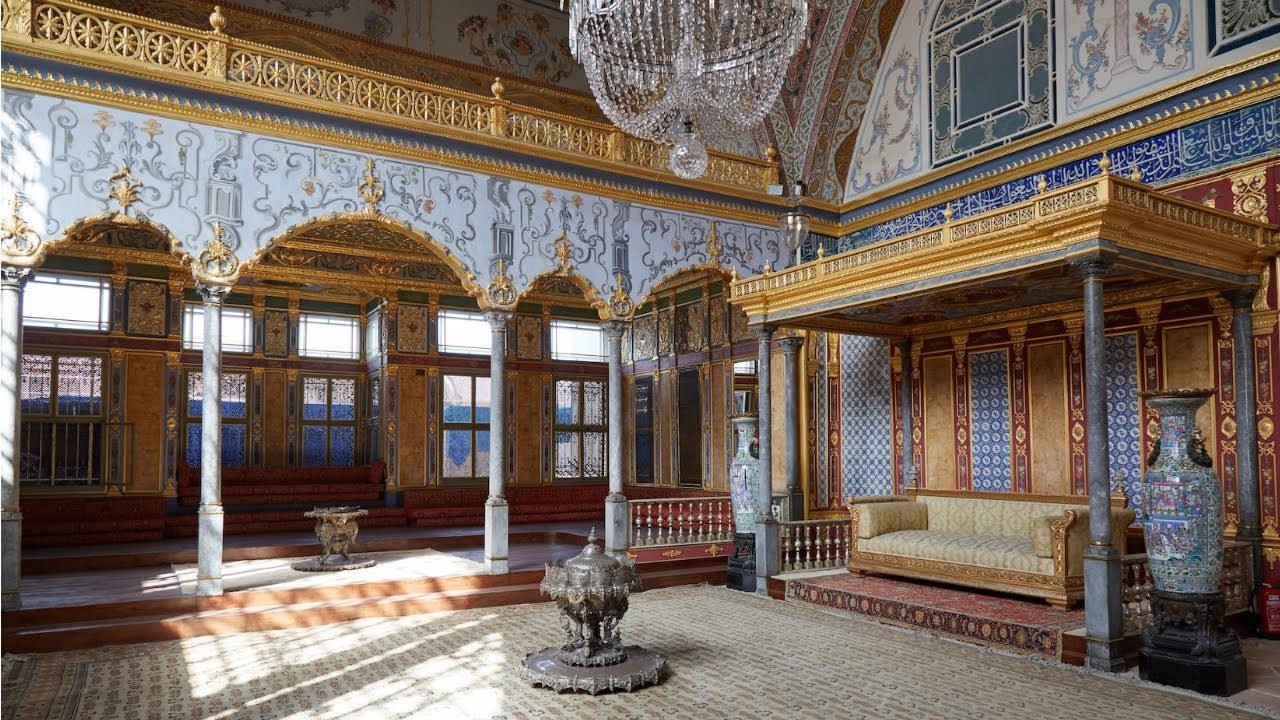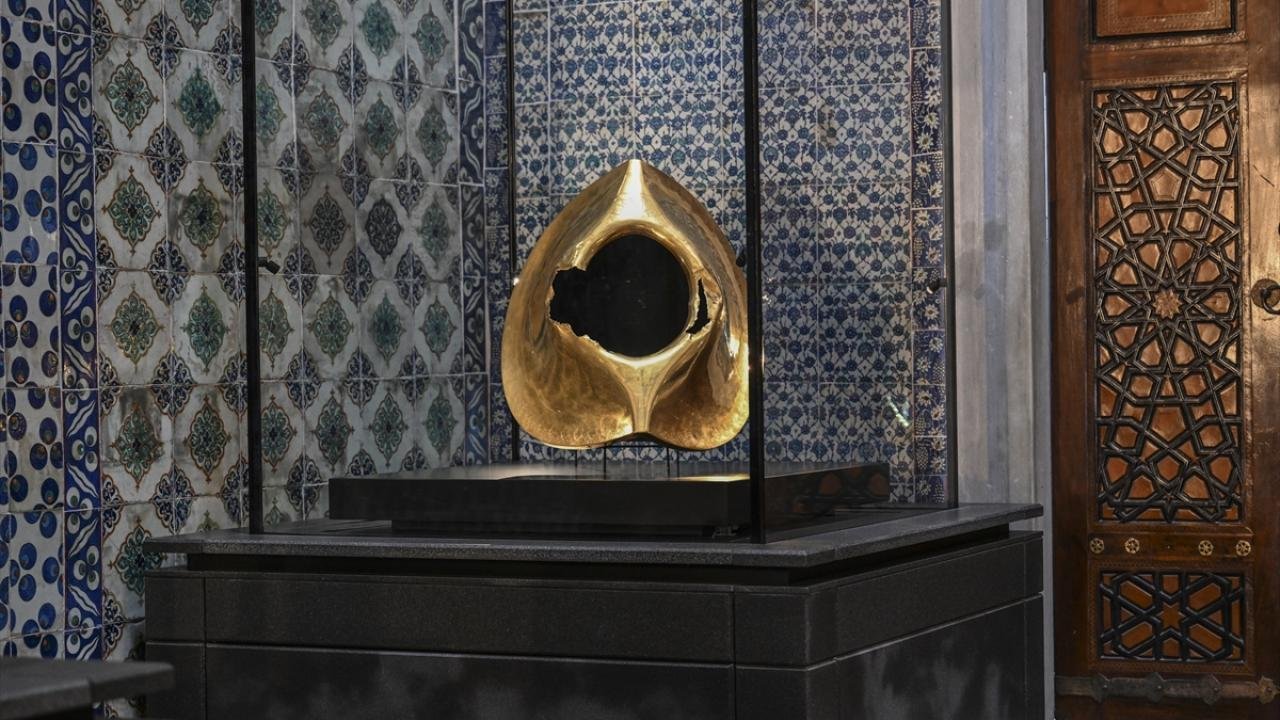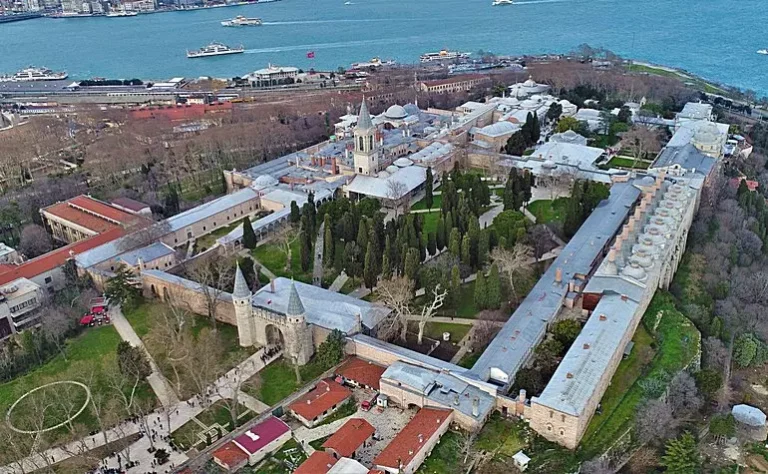Topkapi Palace Istanbul is a must-visit landmark blending history and culture. Discover its rich history, museum treasures, and the best guided tours.
- Topkapi Palace Istanbul: 10 Fascinating Facts You Must Know
- 1. The History of Topkapi Palace
- 2. Topkapi Palace as a Museum
- 3. The Architecture of Topkapi Palace
- 4. The Famous Harem
- 5. The Imperial Treasury
- 6. The Sacred Relics
- 7. Why Take a Guided Tour?
- 8. Topkapi Palace in Popular Culture
- 9. Practical Information for Visitors – İstanbul
- 10. The Legacy of Topkapi Palace Istanbul
- Final Thoughts
Topkapi Palace Istanbul: 10 Fascinating Facts You Must Know
Topkapi Palace Istanbul is not just a historical monument but an experience that takes you deep into the grandeur of the Ottoman Empire. Standing proudly at the heart of Istanbul, Topkapi Palace has been an emblem of power, culture, and imperial intrigue. In this article, we will explore its rich history, transformation into a museum, and why guided tours make your visit even more immersive.
1. The History of Topkapi Palace
Topkapi Palace İstanbul history dates back to the 15th century when Sultan Mehmed II, also known as Mehmed the Conqueror, ordered its construction after the conquest of Constantinople in 1453. The palace served as the administrative, educational, and residential center of the Ottoman sultans for nearly 400 years.
From the 15th to the 19th century, Topkapi Palace was the seat of the Ottoman Empire’s power. It housed not only the sultans but also their court, concubines, and servants. The complex consists of four main courtyards and numerous smaller buildings, including mosques, kitchens, dormitories, and a treasury.

2. Topkapi Palace as a Museum
In 1924, following the establishment of the Republic of Turkey, Topkapi Palace museum was opened to the public by Mustafa Kemal Atatürk. Today, it is one of the most visited museums in Turkey, attracting millions of tourists from around the globe each year.
The museum displays a vast collection of Ottoman artifacts, Islamic relics, imperial jewels, and manuscripts. Among its most prized exhibits are the Prophet Muhammad’s cloak and sword, the Topkapi Dagger encrusted with emeralds, and the Spoonmaker’s Diamond, one of the largest diamonds in the world.
3. The Architecture of Topkapi Palace
Topkapi Palace is a stunning example of Ottoman architecture, characterized by its blend of Islamic, Persian, and Byzantine influences. The palace’s architectural layout follows a hierarchical design, where each courtyard represents a different level of power and intimacy.
- First Courtyard: Also known as the Imperial Gate, this area was open to the public and included the Hagia Irene Church.
- Second Courtyard: Accessible through the Gate of Salutation, this was the administrative heart where the Imperial Council met.
- Third Courtyard: The inner palace or Enderun, home to the sultan’s private chambers and the treasury.
- Fourth Courtyard: The most private and lush area, featuring terraces, pavilions, and gardens.
4. The Famous Harem
One of the most intriguing parts of the palace is the Harem. It was a private space reserved for the sultan, his family, and concubines. The Harem contains over 400 rooms, including the Queen Mother’s apartment, the Sultan’s private chamber, and the Golden Road, a passage where the sultan would walk to visit his concubines.
The Harem is a symbol of both mystery and strict hierarchy. It was strictly controlled by the eunuchs, and its influence on Ottoman politics was significant, especially during the period known as the “Sultanate of Women.”

5. The Imperial Treasury
The Imperial Treasury is where some of the world’s most valuable objects are displayed. Among them is the famous Topkapi Dagger, adorned with giant emeralds, and the legendary Spoonmaker’s Diamond, a rare 86-carat gem.
Visitors are often mesmerized by the sheer wealth on display here, showcasing the empire’s vast reach and power.
6. The Sacred Relics
Inside Topkapi Palace, you will find the Sacred Relics Chamber. This section displays important Islamic artifacts, including:
- The Prophet Muhammad’s mantle and sword.
- The Holy Banner of the Prophet.
- The keys to the Kaaba in Mecca.
These relics hold immense religious significance and are guarded with the utmost care.

7. Why Take a Guided Tour?
A Topkapi Palace guided tour is highly recommended, especially for first-time visitors. While the palace itself is awe-inspiring, a professional guide can provide historical context and stories that bring the palace to life.
With a guided tour, you’ll uncover:
- The daily life of the Ottoman sultans.
- The power struggles within the Harem.
- The symbolic meanings behind the palace’s architecture.
Guides also help navigate the sprawling complex and ensure you don’t miss hidden gems like the Baghdad Pavilion or the Circumcision Room.
8. Topkapi Palace in Popular Culture
Topkapi Palace has made its mark in films, books, and TV series. It was featured in the 1964 film “Topkapi,” and has appeared in several documentaries exploring Ottoman history. Its Harem inspired scenes in historical dramas, including Turkish productions like “Magnificent Century.”
The palace also frequently appears in travel guides and cultural studies focusing on Istanbul and the Ottoman Empire.
9. Practical Information for Visitors – İstanbul
- Opening Hours: The palace is open every day except Tuesdays.
- Tickets: Entrance to the Harem requires a separate ticket.
- Location: Sultanahmet district, close to Hagia Sophia and the Blue Mosque.
- Best Time to Visit: Early mornings or late afternoons to avoid large crowds.
10. The Legacy of Topkapi Palace Istanbul
Today, Topkapi Palace Istanbul stands as a testament to the might and sophistication of the Ottoman Empire. It is more than just a tourist attraction; it’s a living monument to centuries of history, culture, and power dynamics.
Whether you are a history enthusiast, an architecture lover, or simply someone seeking to explore Istanbul’s treasures, Topkapi Palace offers a journey into the past that you won’t forget.
Final Thoughts
With its rich Topkapi Palace history, fascinating Topkapi Palace museum collections, and immersive Topkapi Palace guided tour experiences, this imperial complex is a must-see on your Istanbul itinerary. From sacred relics to hidden stories of the Harem, every corner of the palace tells a story worth hearing.





